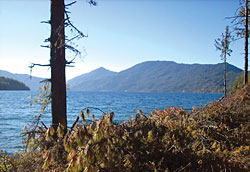 |
Last month, I had the chance to visit the Karnali region for the first time. I was thrilled to be leaving Kathmandu's light pollution for the clear skies of Jumla. But although I had a confirmed air ticket, I had to wait at Nepalganj airport for seven hours, which killed some of my initial enthusiasm. At last, just after sunset, we landed at Jumla and I found myself in the land of my dreams. I looked towards the cloudless sky to find a magnificent crescent moon hanging above the horizon.
Next day I was in Lamra village, some 10km south of Jumla Bajar. We stayed at a hotel belonging to Balram Sah, a science teacher from Saptari who had settled in Lamra after marrying a local woman.
In the evening I asked him how he teaches astronomy to his rural students. He teaches pupils in Grades 7 to 10, but cannot identify the stars and planets in the sky. I pointed out a star-like object on the western horizon and told him it was the giant planet Jupiter. His eyes widened in astonishment.
Early the following morning, I woke at 4AM and looked up at the sky. The great celestial dome was above me with the stars and constellations clearly visible. Venus was dazzling in the eastern sky. Mars, the red planet, was overhead and the great Saptarshi (Big Dipper) was to the north.
Sah told me the weather generally remains clear in Jumla all year round, come rain or snow. I imagine the Karnali region has great potential for stargazing. Later, in Mugu, we were guests of a local army unit at Rara Lake, where the major told us that observing the full moon rising above the lake offered the experience of a lifetime.
Back to business. In December, we have the winter solstice on 22 December, which is the shortest day of the year in the northern hemisphere. During the evening, you can see the constellations Gemini, Taurus, Aries, Pisces and Aquarius along the Zodiac from east to west. Just south of Gemini is the great winter constellation Orion, popularly known as Teen-Tare here in Nepal. To the north of Taurus and Aries is the constellation of Perseus, where Comet Holmes has been putting on a spectacular show since October. With binoculars, enjoy the brilliant Pleiades (Seven Sisters), a cluster of tiny but brilliant stars in the Taurus constellation.
Of the planets, Mercury is behind the Sun on 17 December, so we won't be able to see it at all this month. Venus, in Virgo, rises in the east at about 4AM and appears as an intensely bright morning 'star'. Mars, in Gemini, will be at opposition (to the Sun) on 24 December and hence is very well placed for observation. It will be the closest it has been to us for the past two years. Jupiter is behind the Sun on 23 December and will not be visible for the whole month. Saturn, in Leo, is rising in the east in the late evening and is high in the southern sky by dawn.
The Geminids meteor shower, the best of the year, peaks on the night of 13-14 December, when we might expect to see one meteor every couple of minutes. On new year's eve, you might also catch the Quadrantids shower, which peaks in early January.
kedarbadu(at)gmail.com


